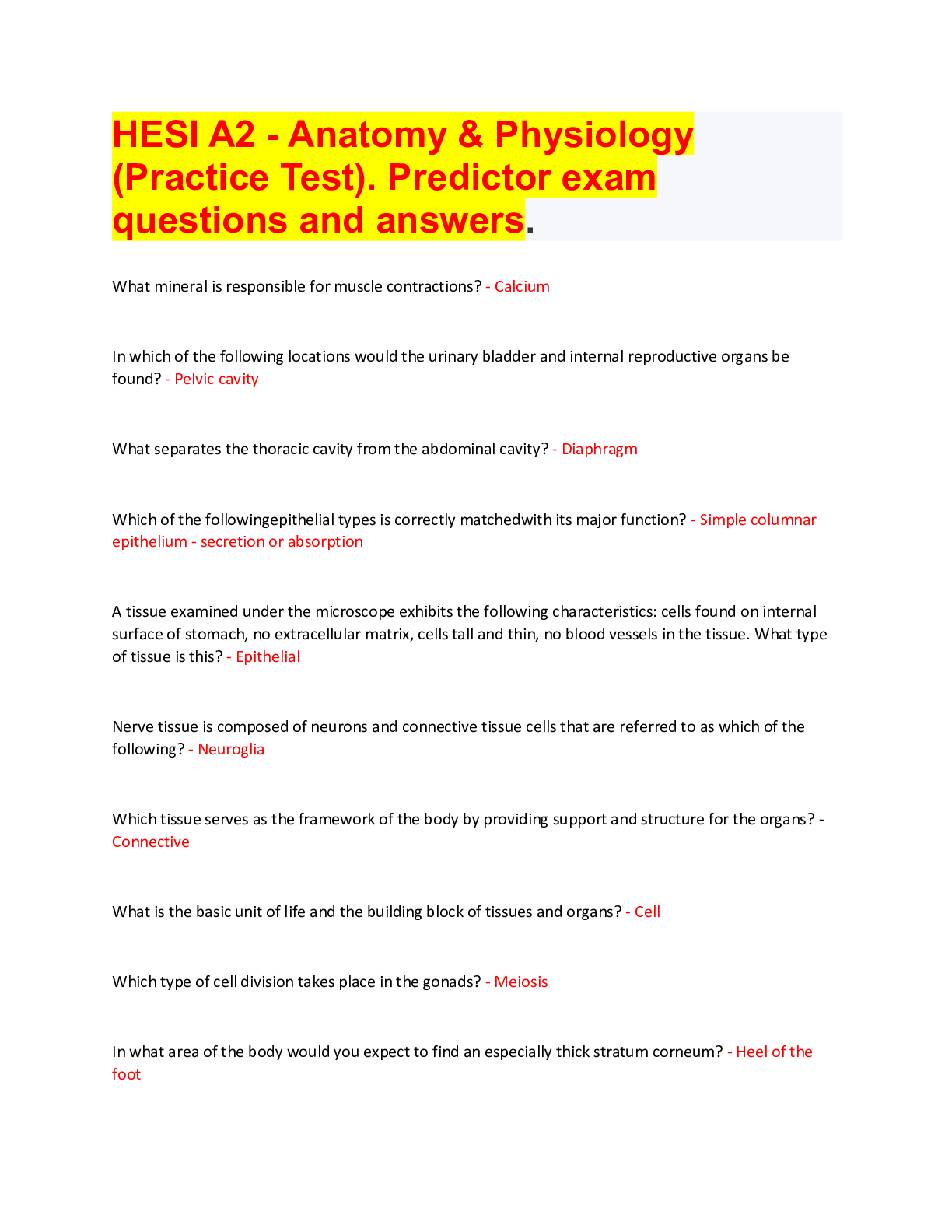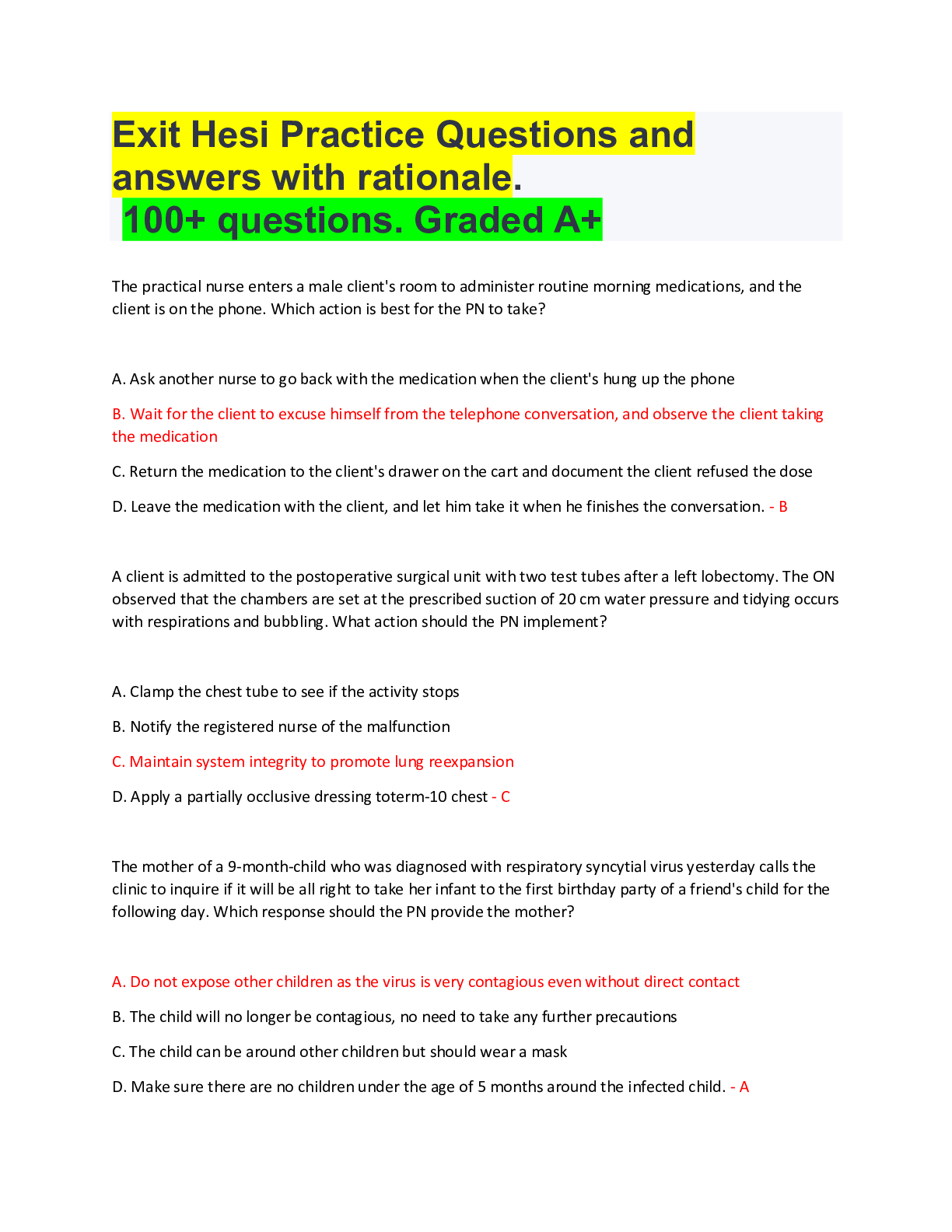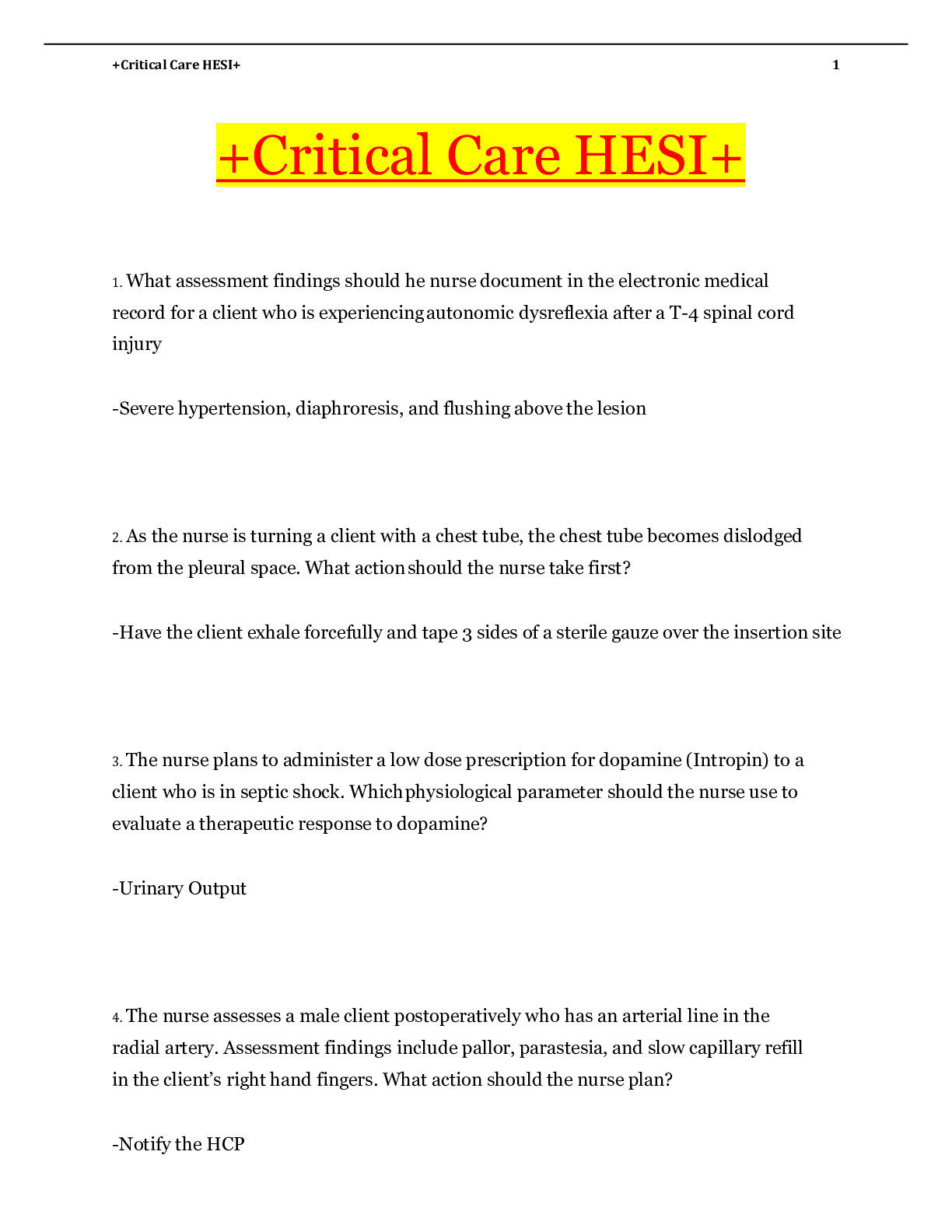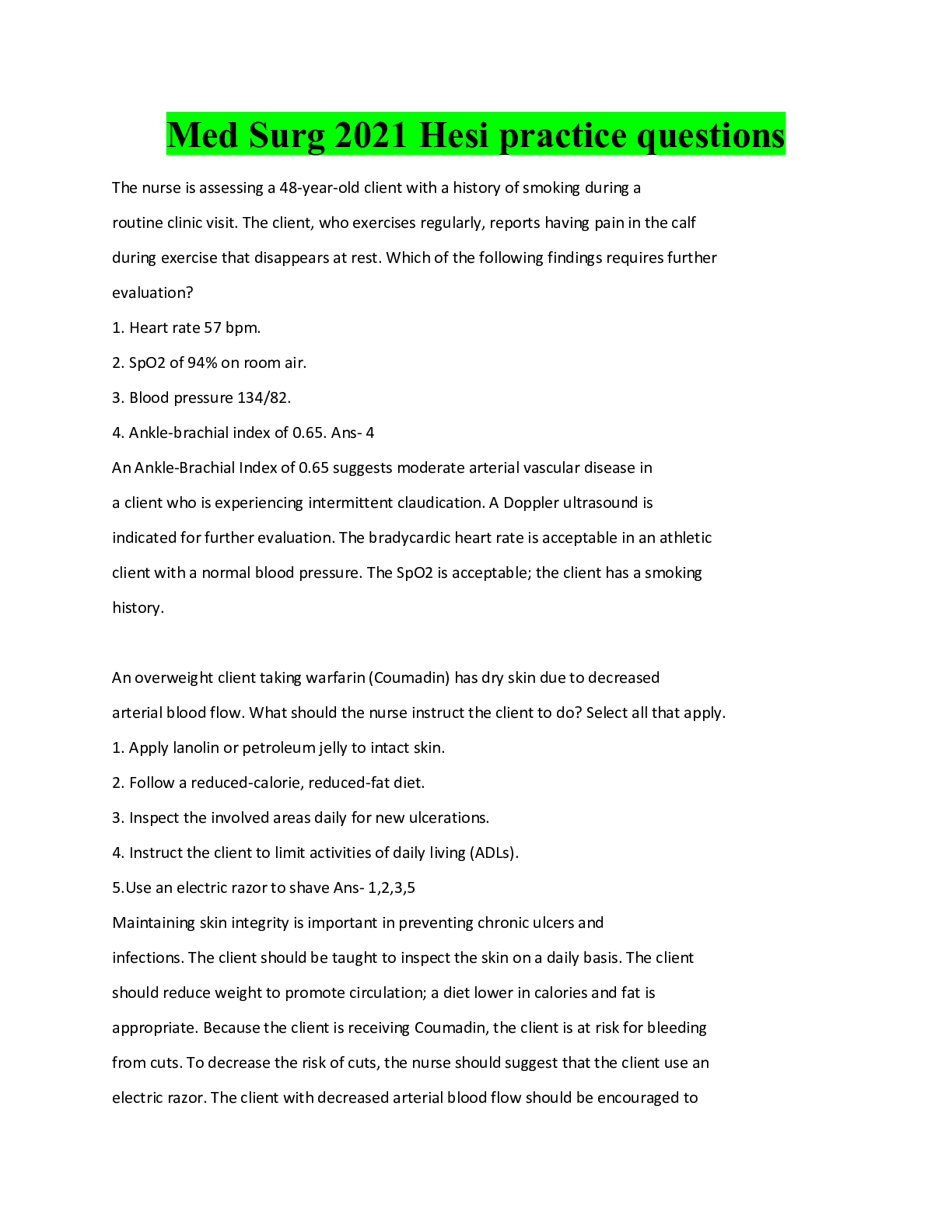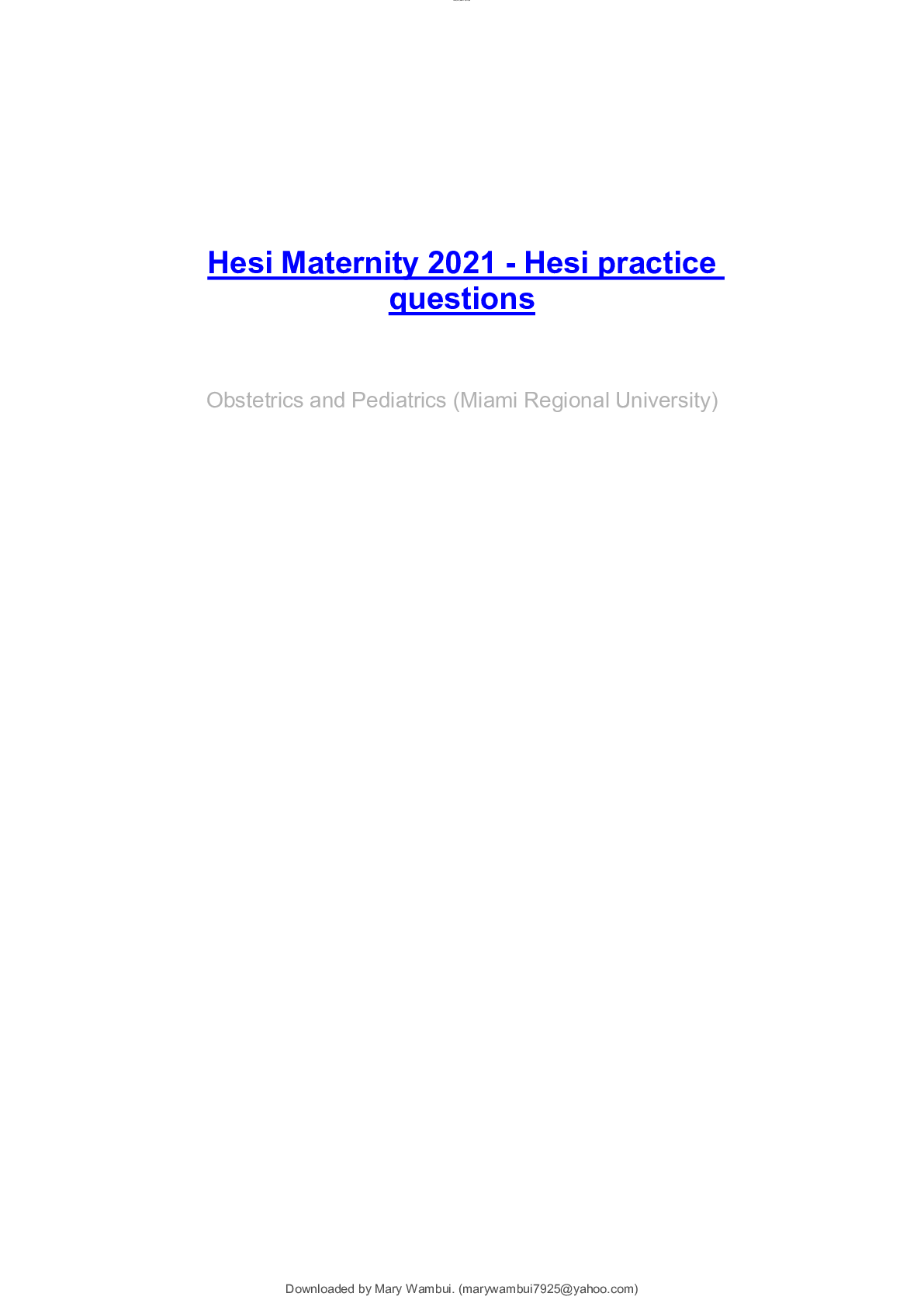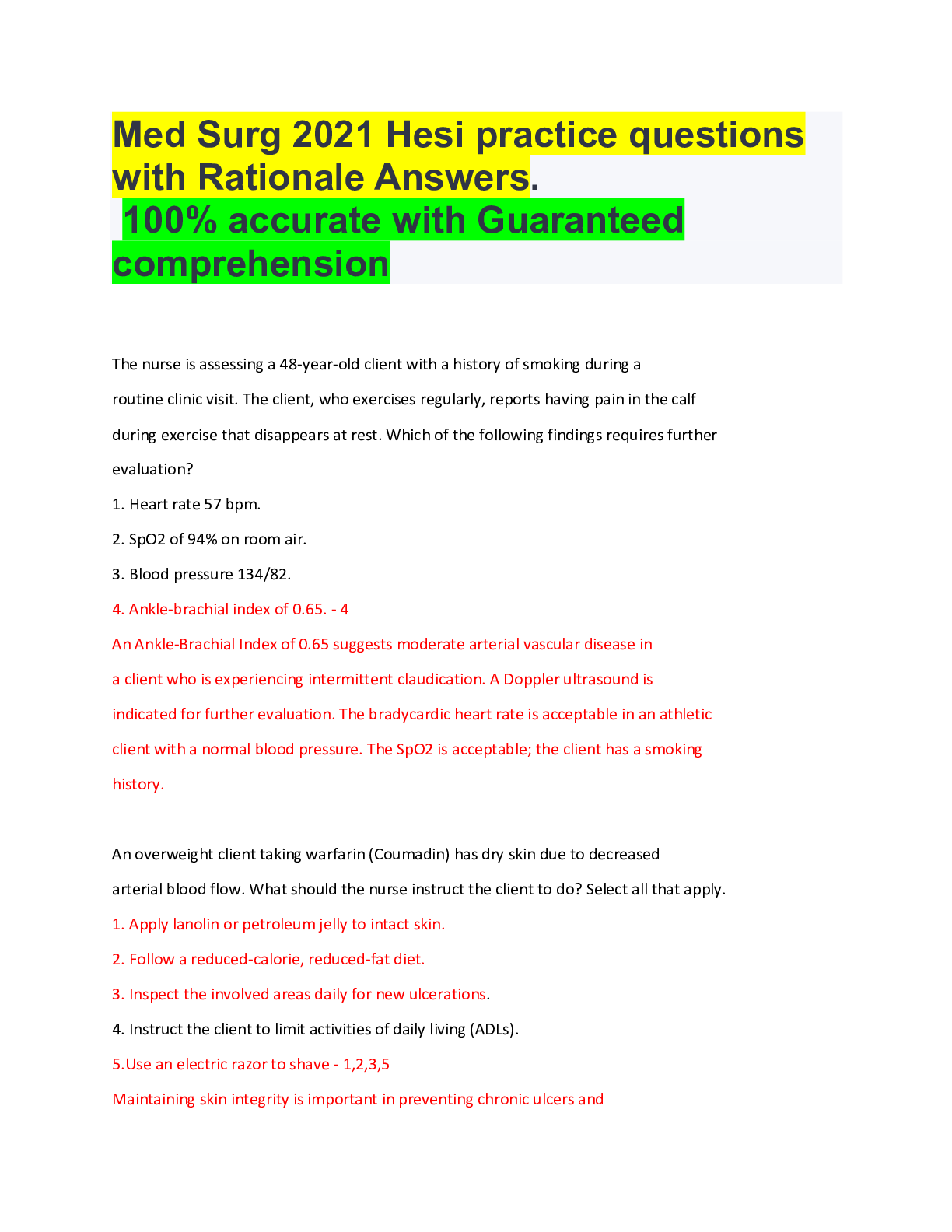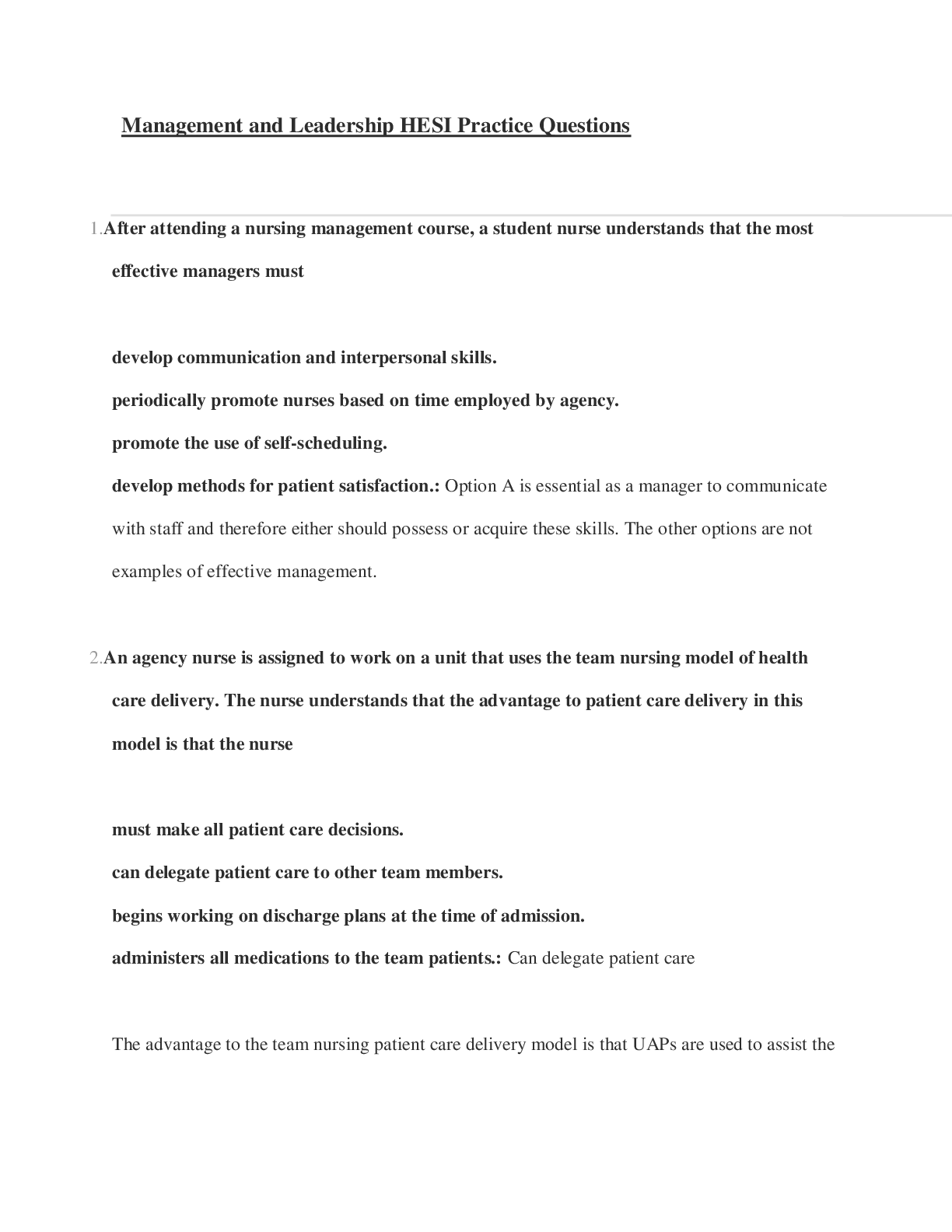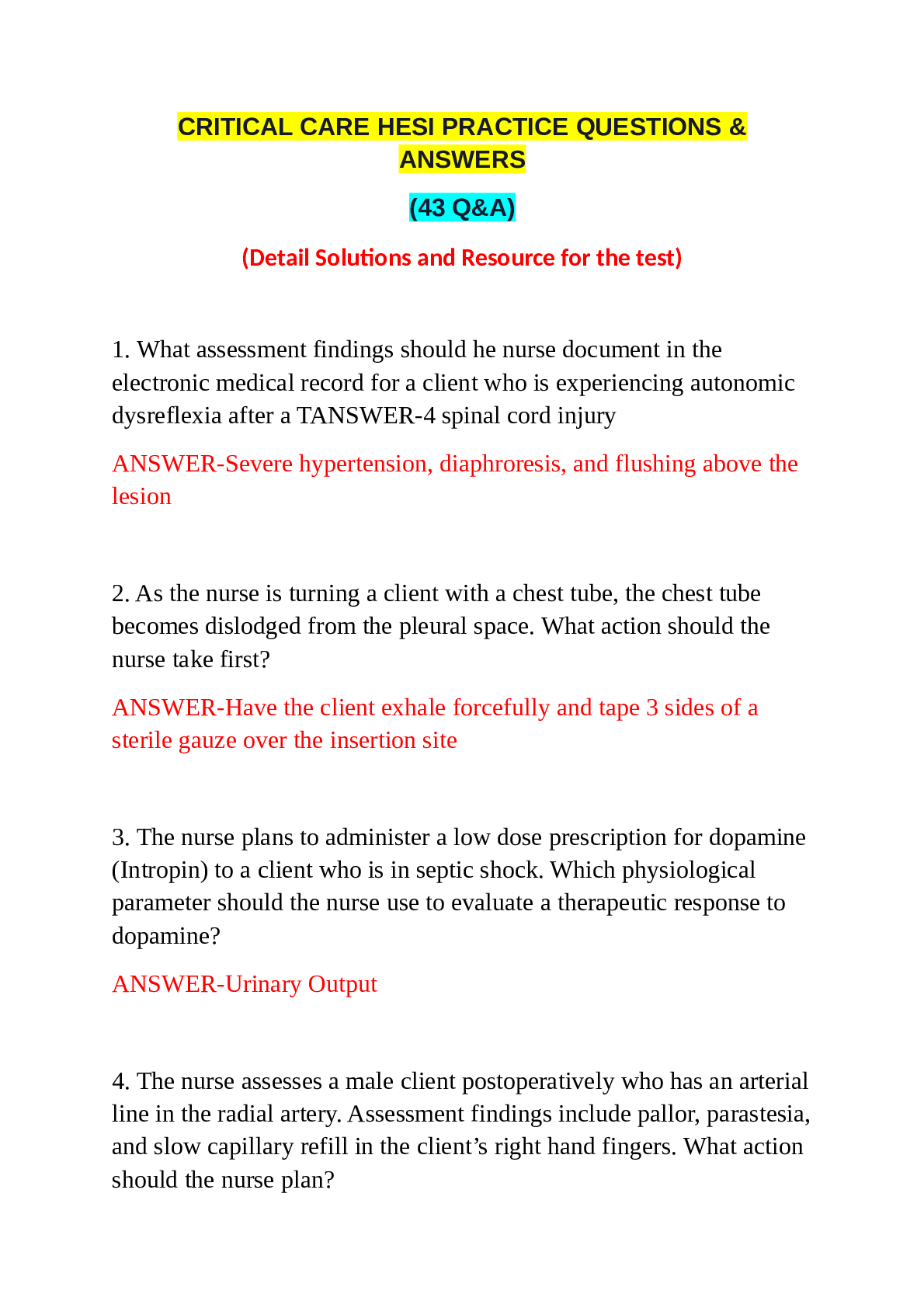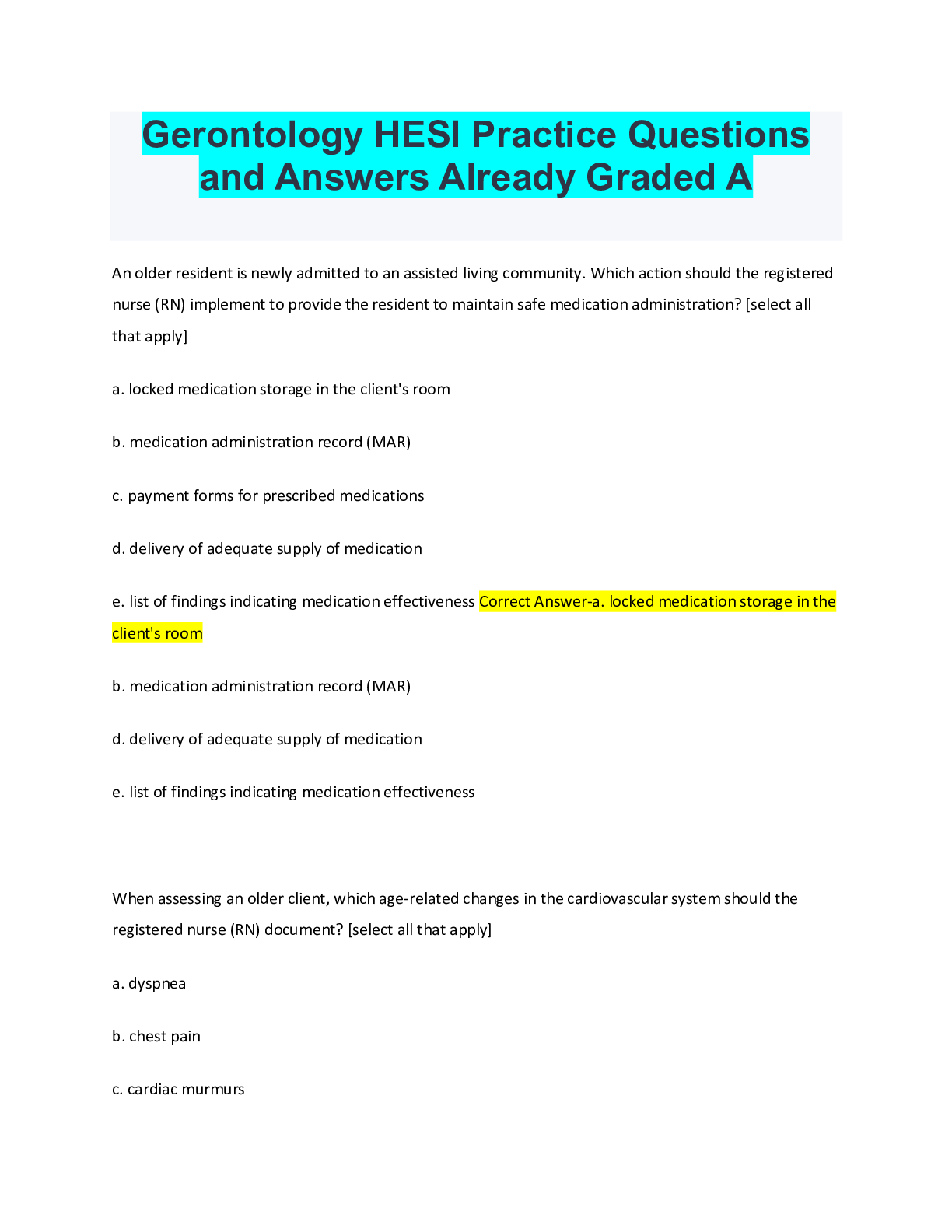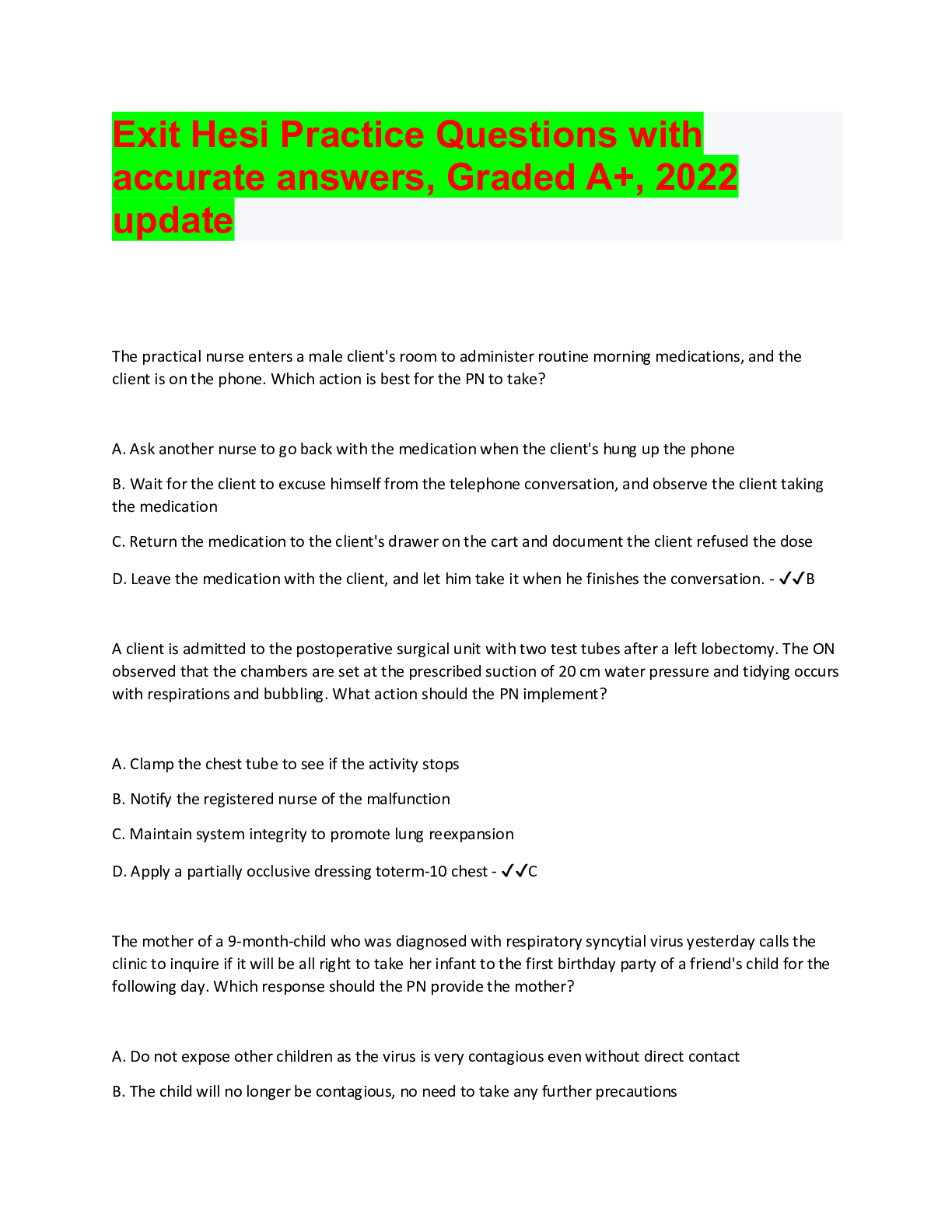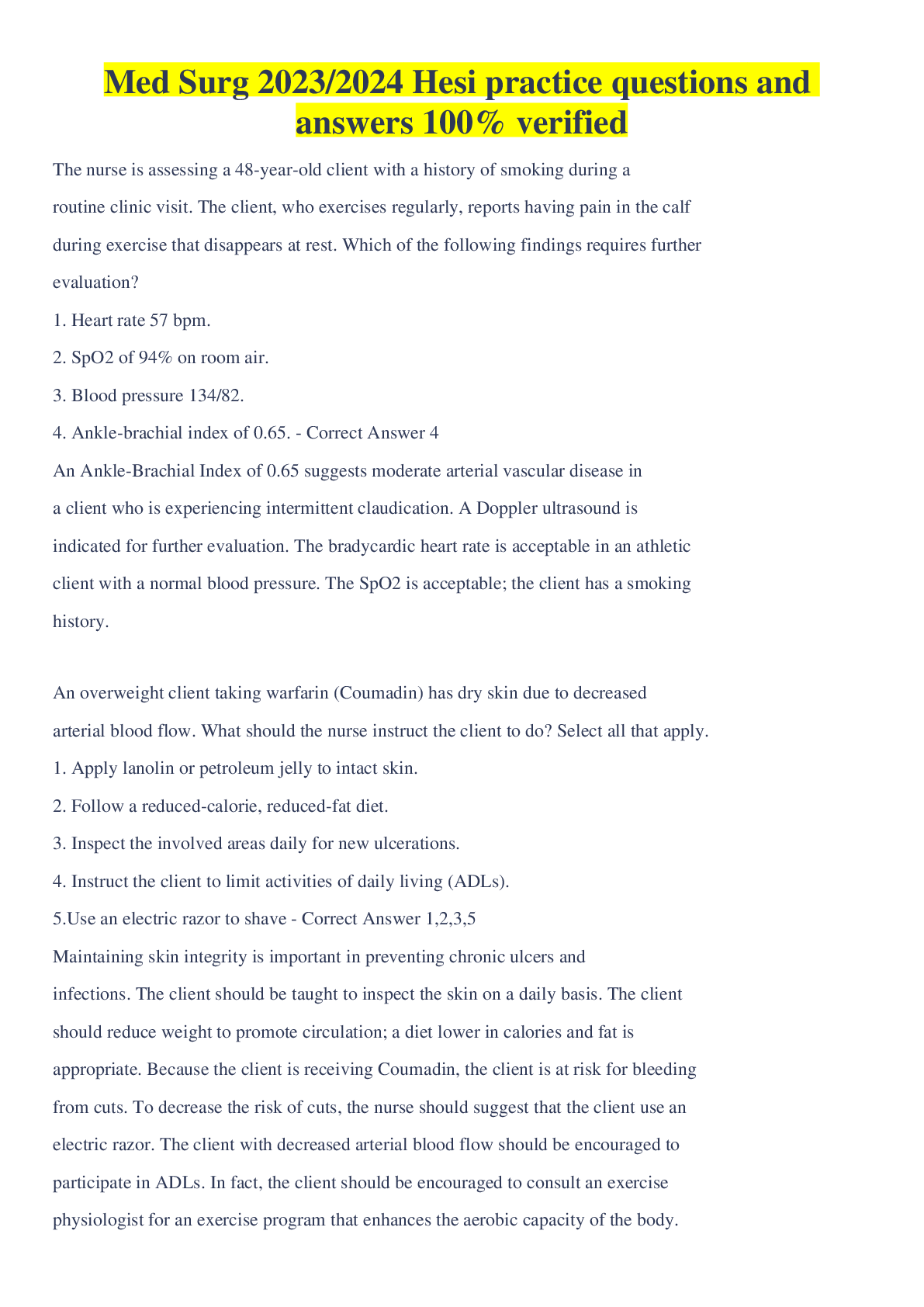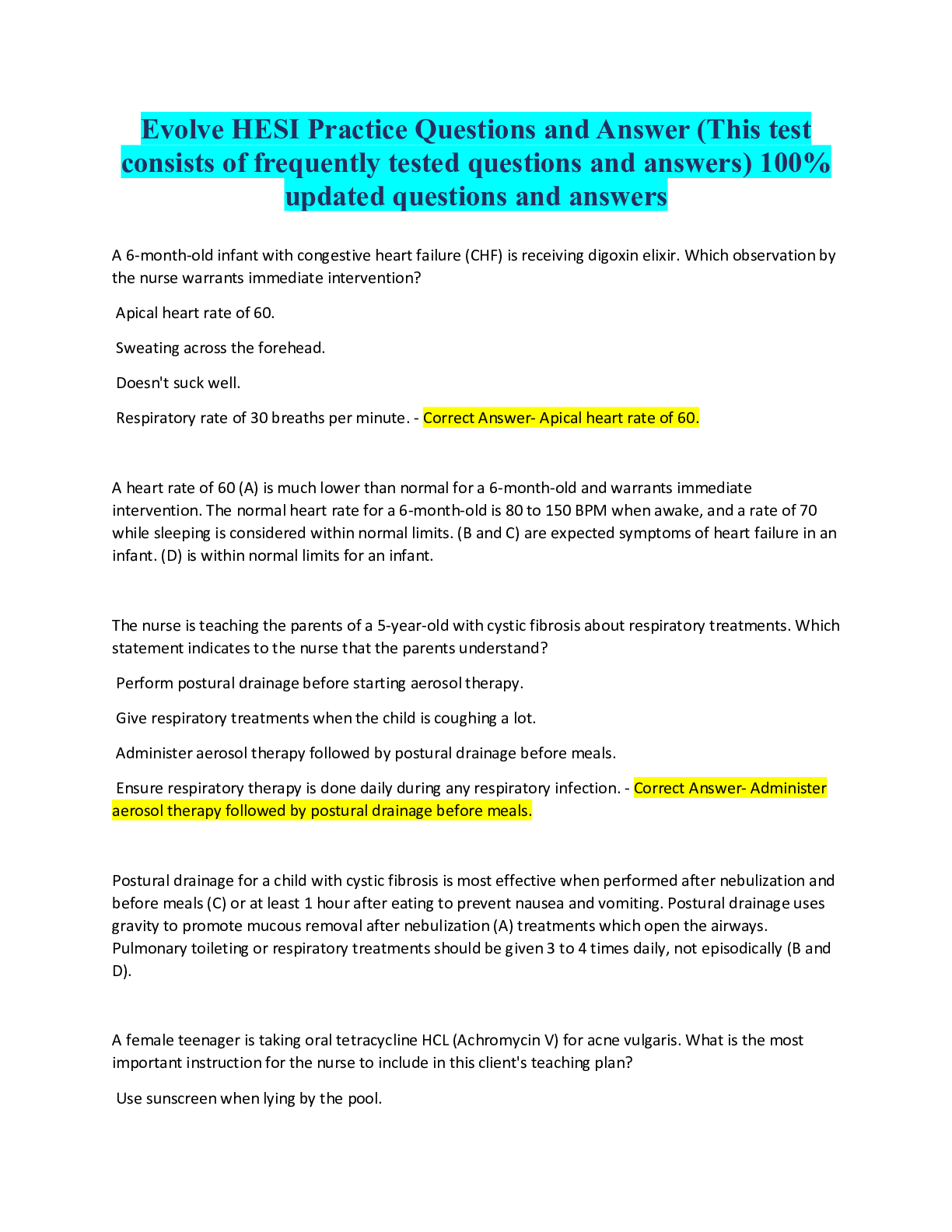124 OB Hesi practice Questions with Answers
Document Content and Description Below
124 OB Hesi practice Questions with Answers A client in active labor is admitted with preeclampsia. Which assessment finding is most significant in planning this client's care? A. Patellar refle... x 4+ B. Blood pressure 158/80. C. Four-hour urine output 240 ml. D. Respiration 12/minute. >>>>A A 4+ reflex in a client with pregnancy-induced hypertension (A) indicates hyperreflexia, which is an indication of an impending seizure. Although (B) is significant, some individuals have preeclampsia superimposed on chronic hypertension, and an elevated blood pressure alone is not as significant a finding as (A). (C and D) are important, but these findings are within normal range. A client at 32-weeks gestation is diagnosed with preeclampsia. Which assessment finding is most indicative of an impending convulsion? A. 3+ deep tendon reflexes and hyperclonus. B. Periorbital edema, flashing lights, and aura. C. Epigastric pain in the third trimester. D. Recent decreased urinary output. >>>>A Three plus deep tendon reflexes and hyperclonus (A) are indicative of an impending convulsion and requires immediate attention. Epigastric pain (C) in the third trimester is indicative of HELLP Syndrome leading to impaired hepatic functioning. (B and D) are pathological changes that occur with preeclampsia. The nurse is providing discharge teaching for a client who is 24 hours postpartum. The nurse explains to the client that her vaginal discharge will change from red to pink and then to white. The client asks, "What if I start having red bleeding after it changes?" What should the nurse instruct the client to do? A. Reduce activity level and notify the healthcare provider. B. Go to bed and assume a knee-chest position C. Massage the uterus and go to the emergency room. D. Do not worry as this is a normal occurrence. >>>>A Lochia should progress in stages from rubra (red) to serosa (pinkish) to alba (whitish), and not return to red. The return to rubra usually indicates subinvolution of infection. Which nursing intervention is most helpful in relieving postpartum uterine contractions or "afterpains?" A. Lying prone with a pillow on the abdomen B. Using a breast pump C. Massaging the abdomen D. Giving oxytocic medications >>>>A Lying prone (A) keeps the fundus contracted and is especially useful with multiparas, who commonly experience afterpains due to lack of uterine tone. A multigravida client arrives at the labor and delivery unit and tells the nurse that her bag of water has broken. The nurse identifies the presence of meconium fluid on the perineum and determines the fetal heart rate is between 140 to 150 beats/minute. What action should the nurse implement next? A. Complete a sterile vaginal exam B. Take maternal temperature every 2 hours C. Prepare for an immediate cesarean birth D. Obtain sterile suction equipment >>>>A A vaginal exam (A) should be performed after the rupture of membranes to determine the presence of a prolapsed cord. When explaining "postpartum blues" to a client who is 1 day postpartum, which symptoms should the nurse include in the teaching plan? (Select all that apply.) A. Mood swings B. Panic attacks C. Tearfulness D. Decreased need for sleep E. Disinterest in the infant >>>>AC "Postpartum blues" is a common emotional response related to the rapid decrease in placental hormones after delivery and include mood swings (A), tearfulness (C), feeling low, emotional, and fatigued. A client at 30-weeks gestation, complaining of pressure over the pubic area, is admitted for observation. She is contracting irregularly and demonstrates underlying uterine irritability. Vaginal examination reveals that her cervix is closed, thick, and high. Based on these data, which intervention should the nurse implement first? A. Provide oral hydration B. Have a complete blood count (CBC) drawn C. Obtain a specimen for urine analysis D. Place the client on strict bedrest >>>>C Obtaining a urine analysis (C) should be done first because preterm clients with uterine irritability and contractions are often suffering from a urinary tract infection, and this should be ruled out first. A client in active labor complains of cramps in her leg. What intervention should the nurse implement? A. Ask the client if she takes a daily calcium tablet B. Extend the leg and dorsiflex the foot C. Lower the leg off the side of the bed D. Elevate the leg above the heartb. Extend the leg and dorsiflex the foot >>>>B Dorsiflexing the foot by pushing the sole of the foot forward or by standing (if the client is capable) (B) and putting the heel of the foot on the floor is the best means of relieving leg cramps [Show More]
Last updated: 1 year ago
Preview 1 out of 34 pages
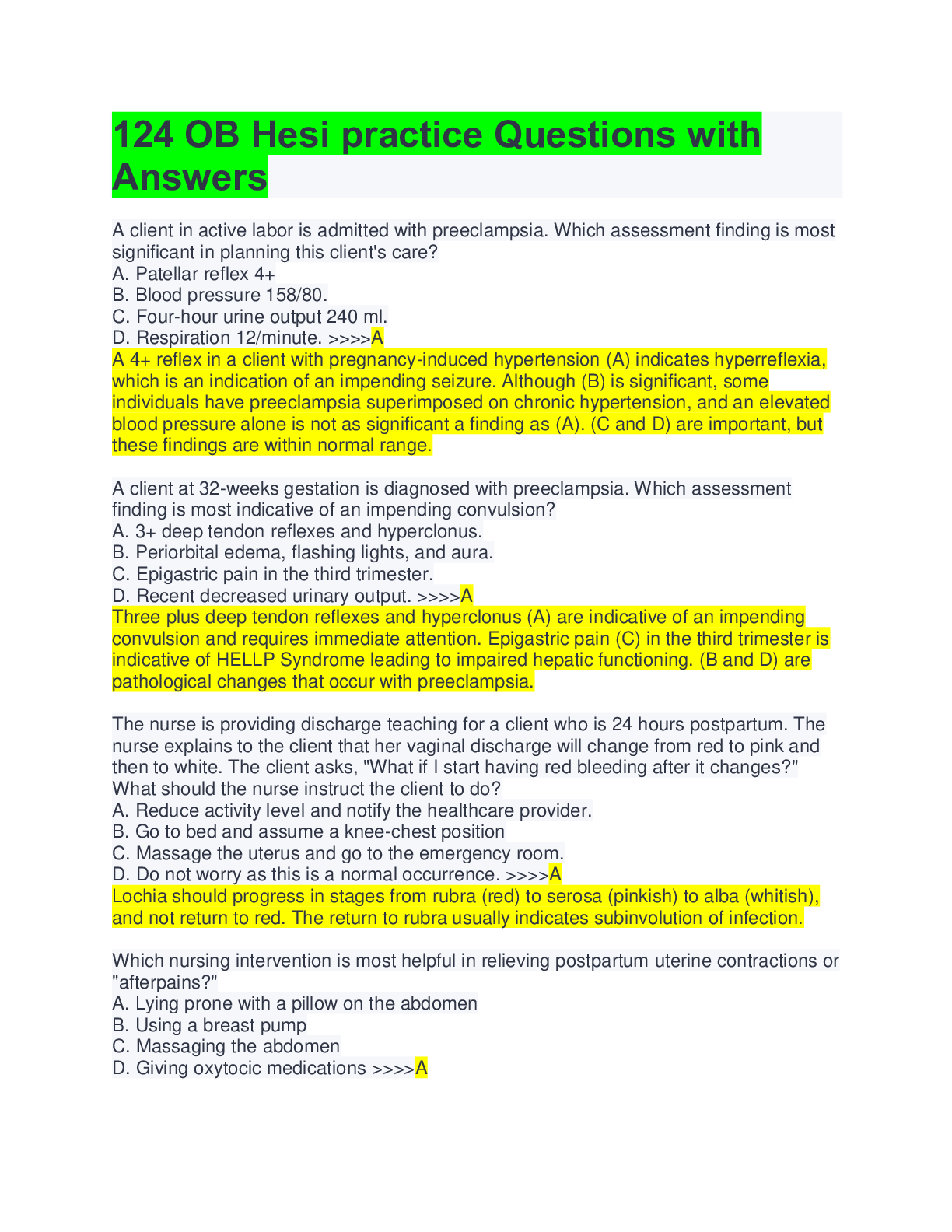
Reviews( 0 )
Document information
Connected school, study & course
About the document
Uploaded On
Sep 21, 2022
Number of pages
34
Written in
Additional information
This document has been written for:
Uploaded
Sep 21, 2022
Downloads
0
Views
75

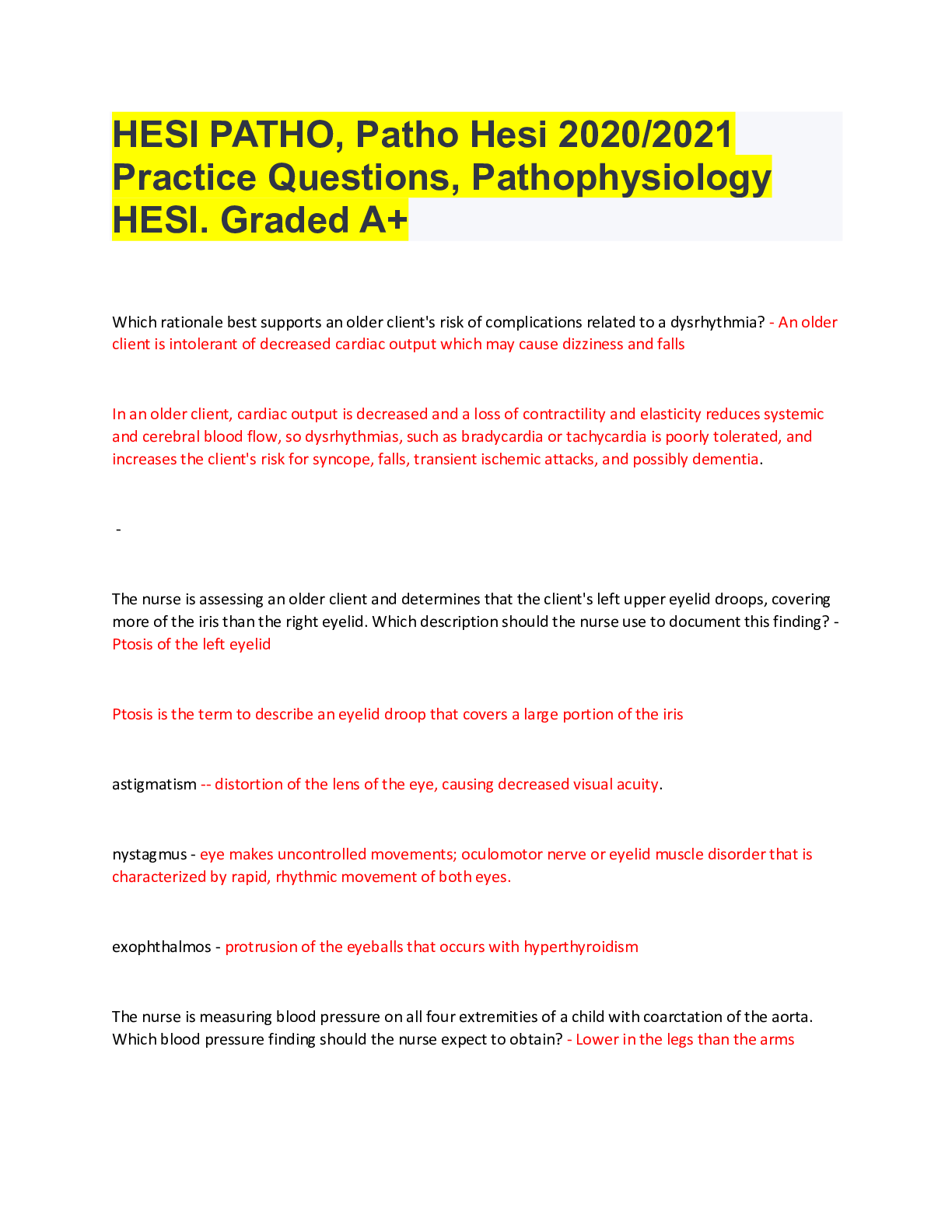
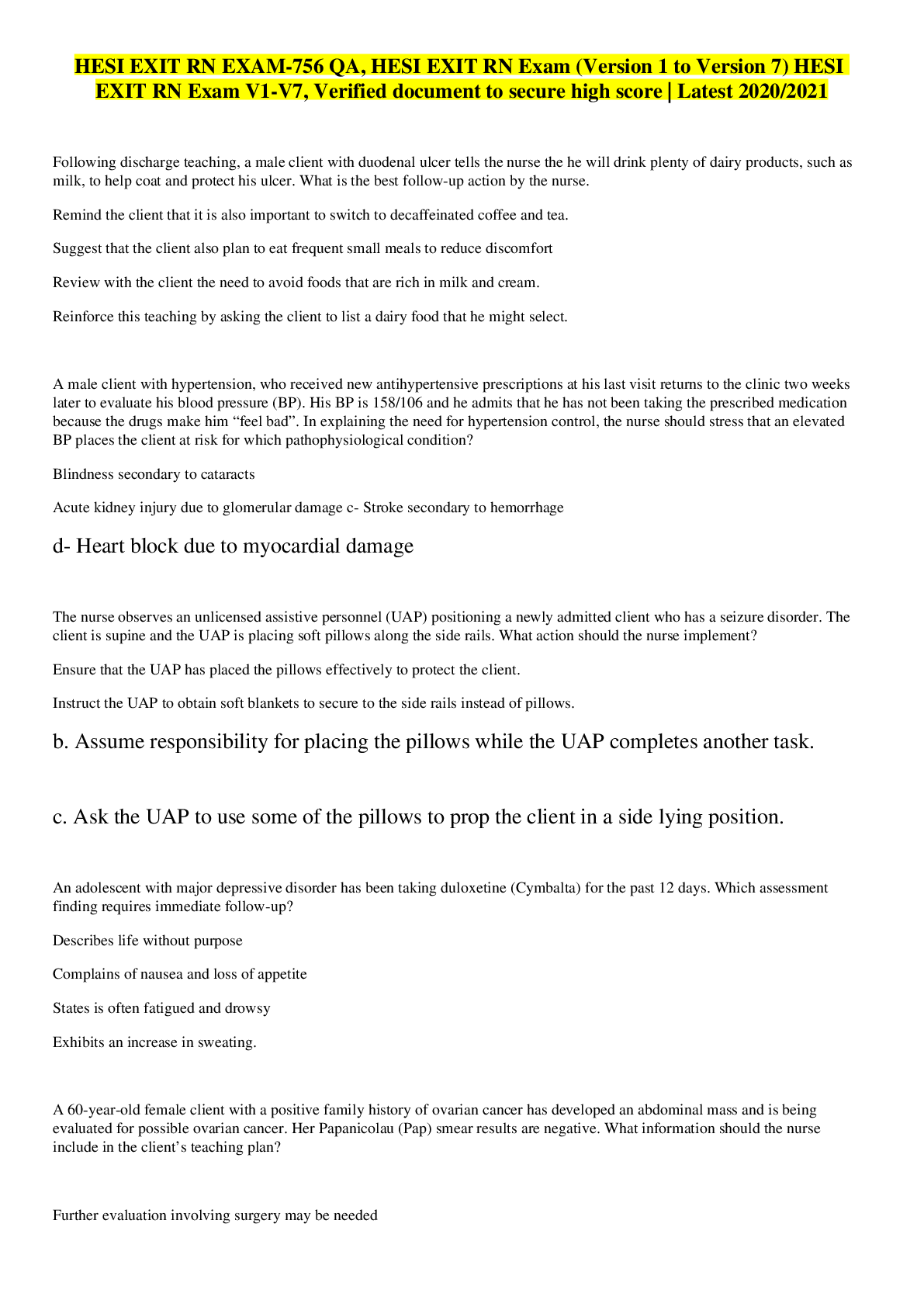
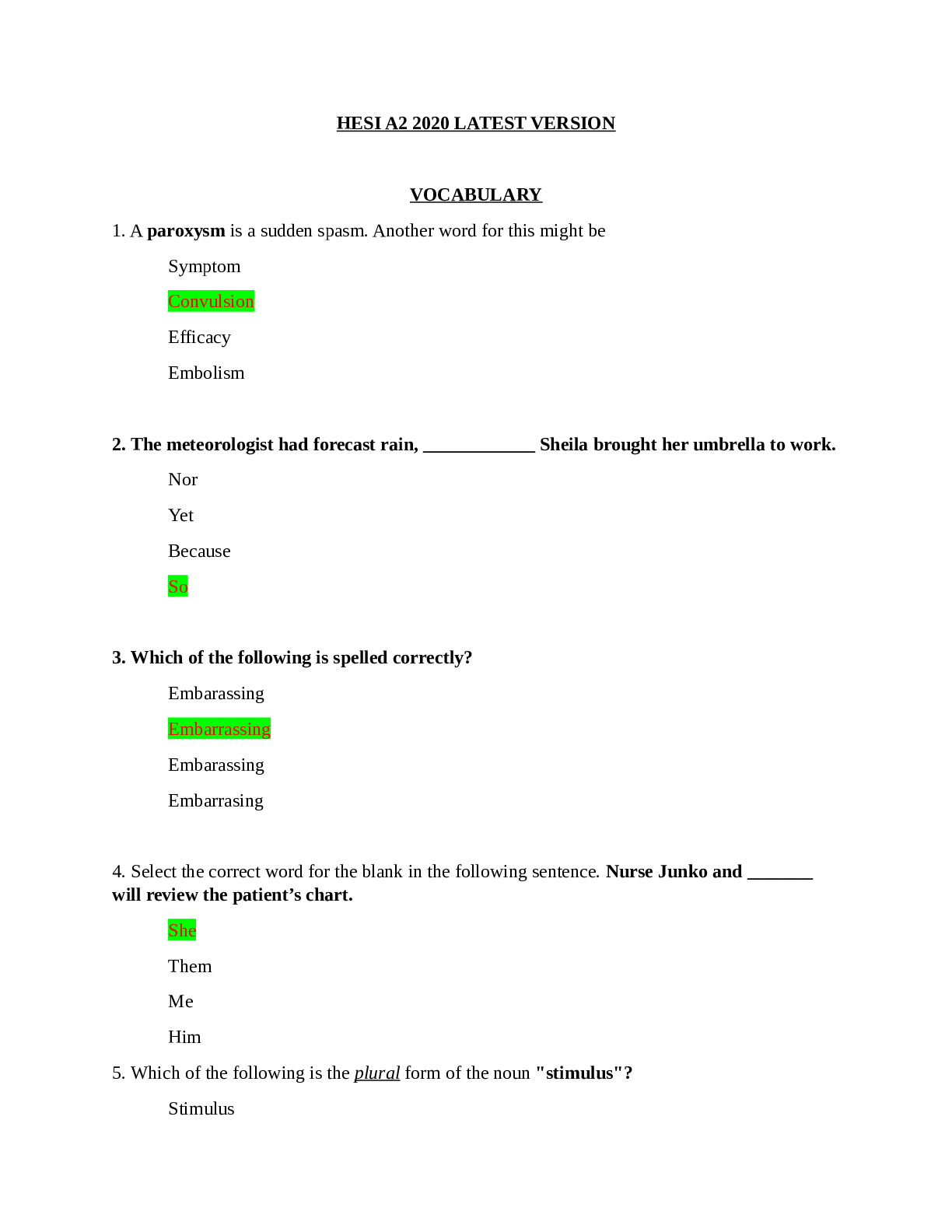
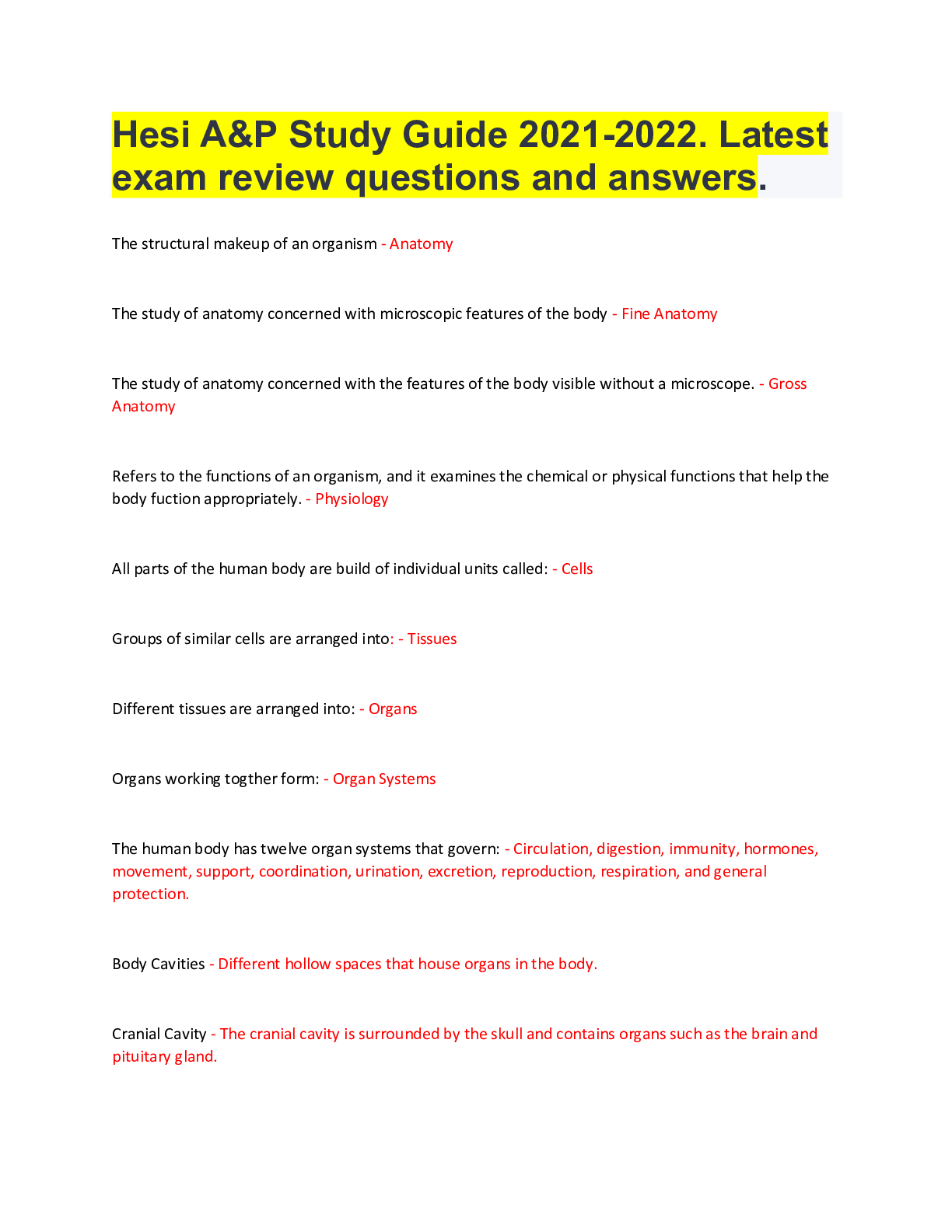
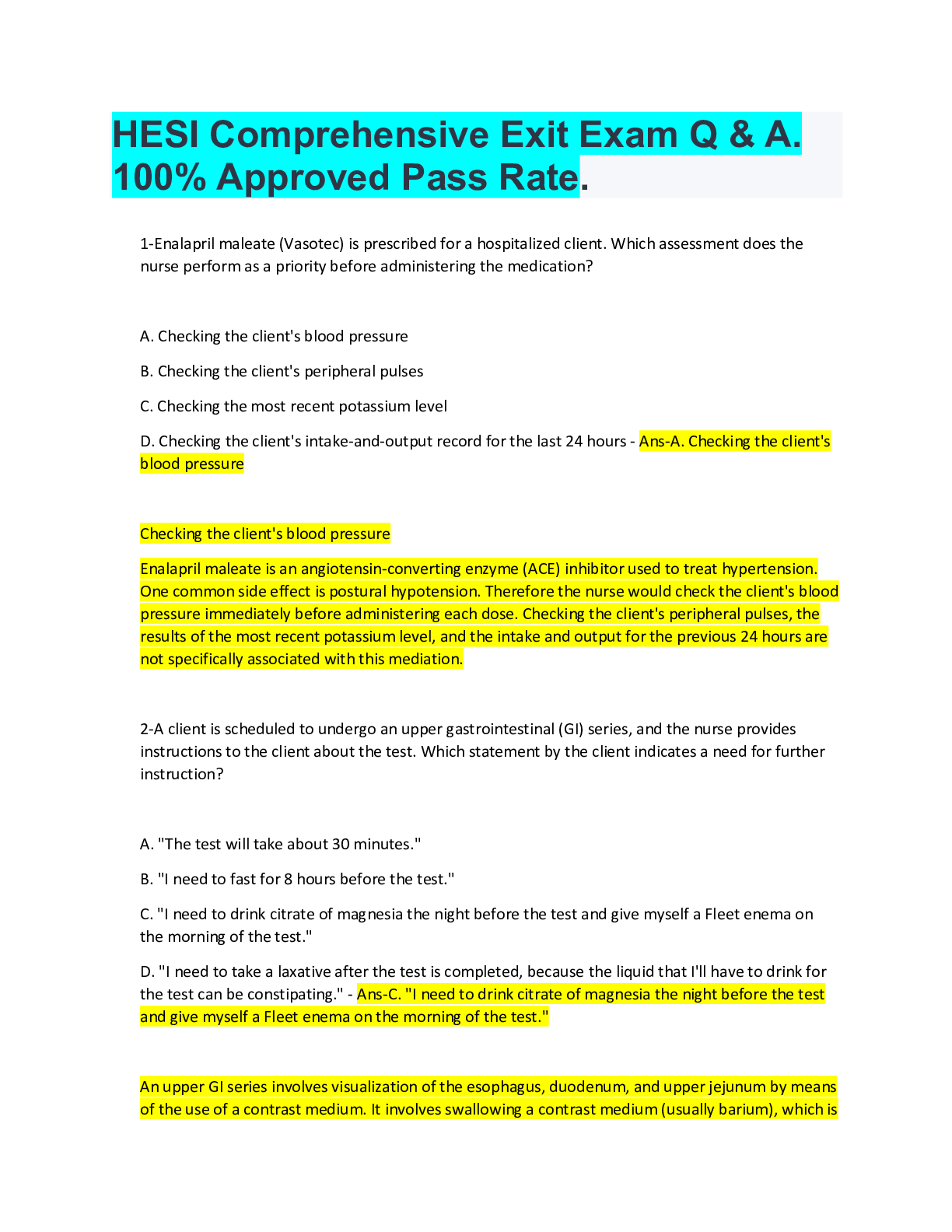
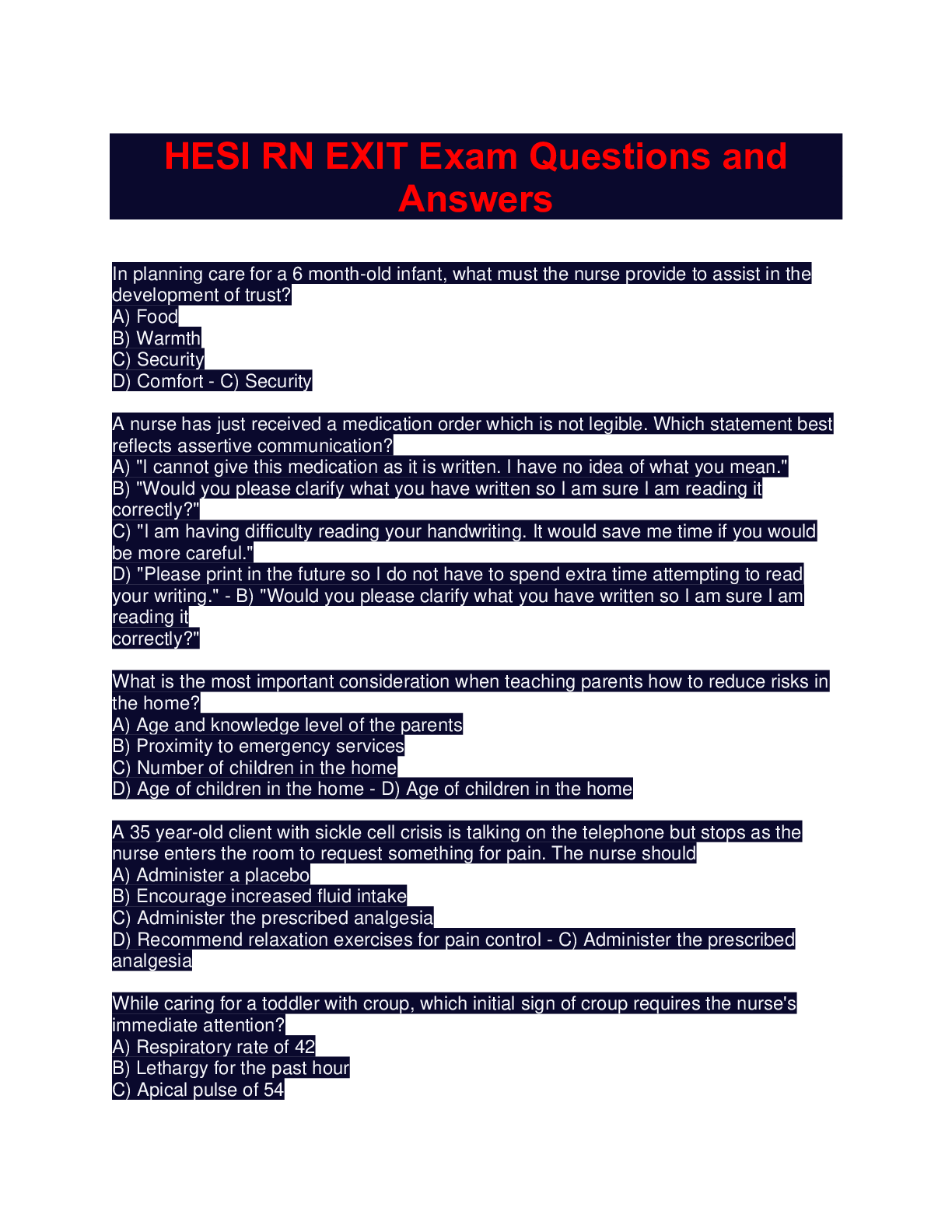
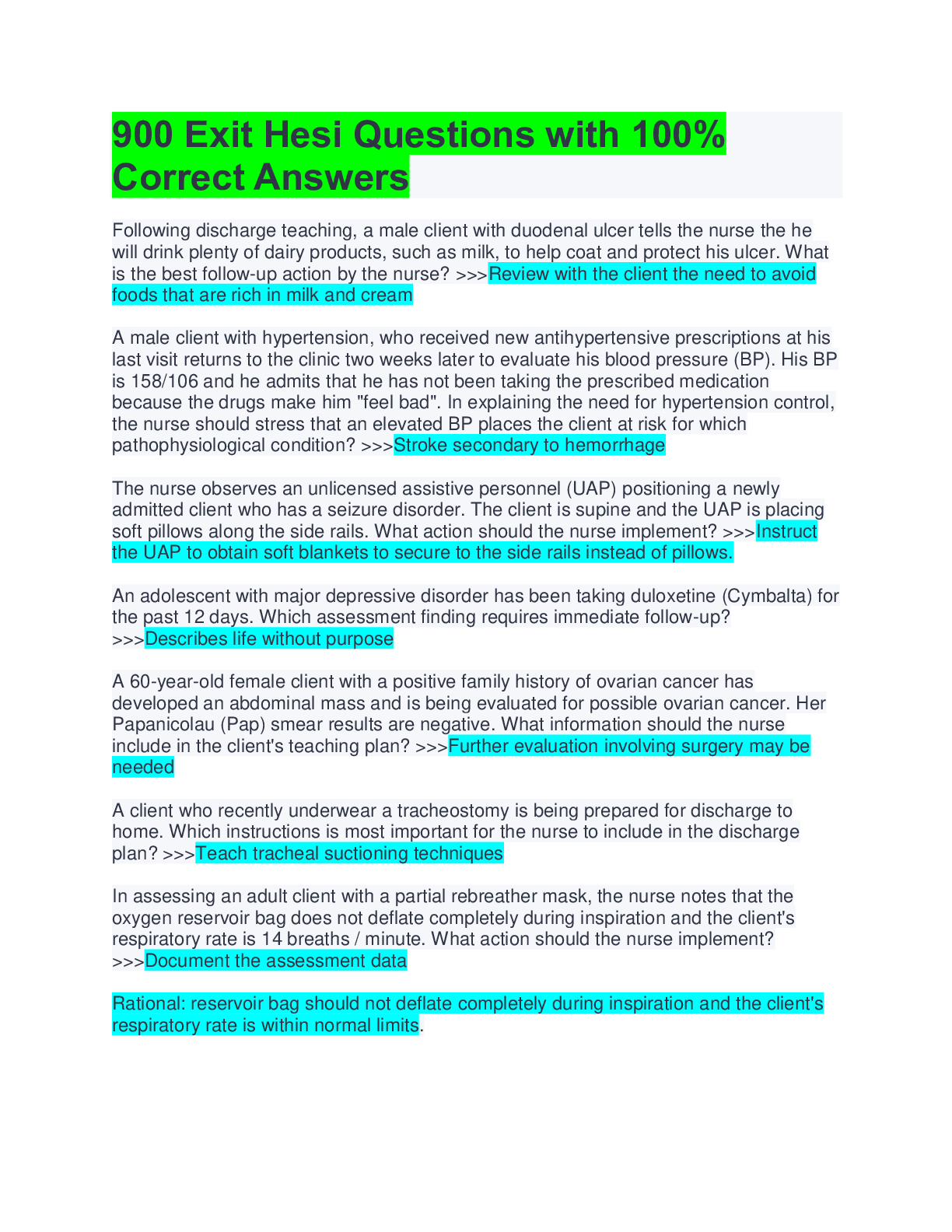

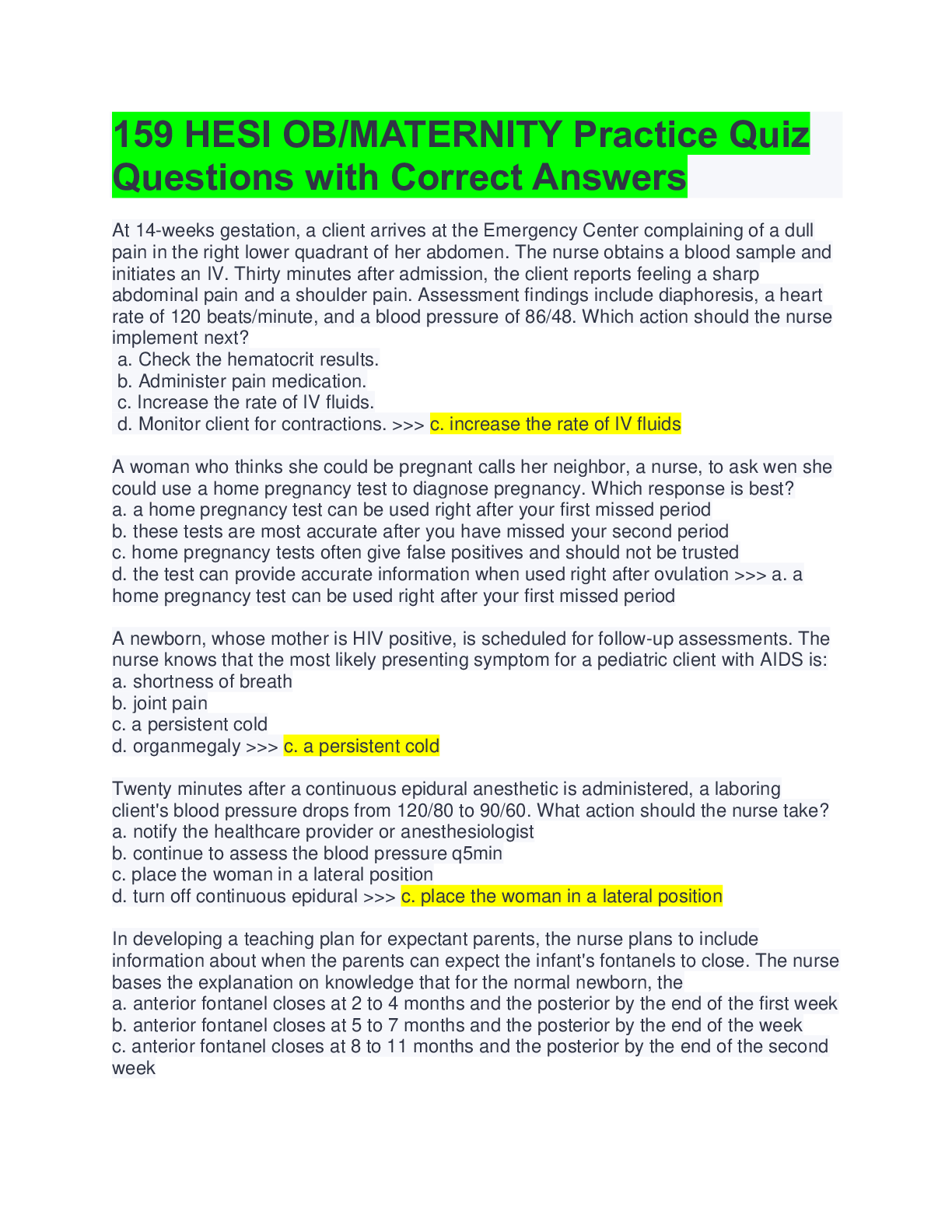
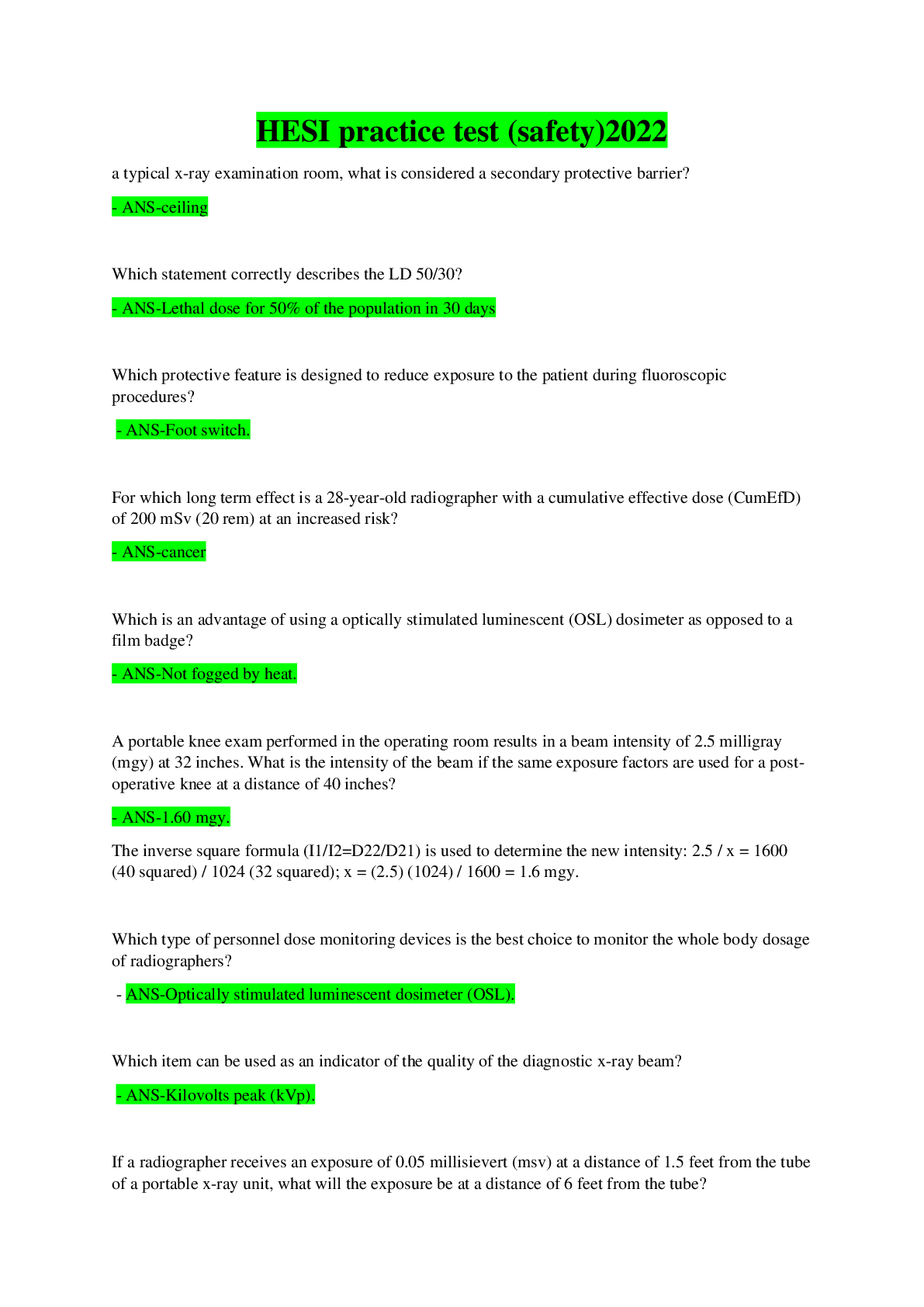
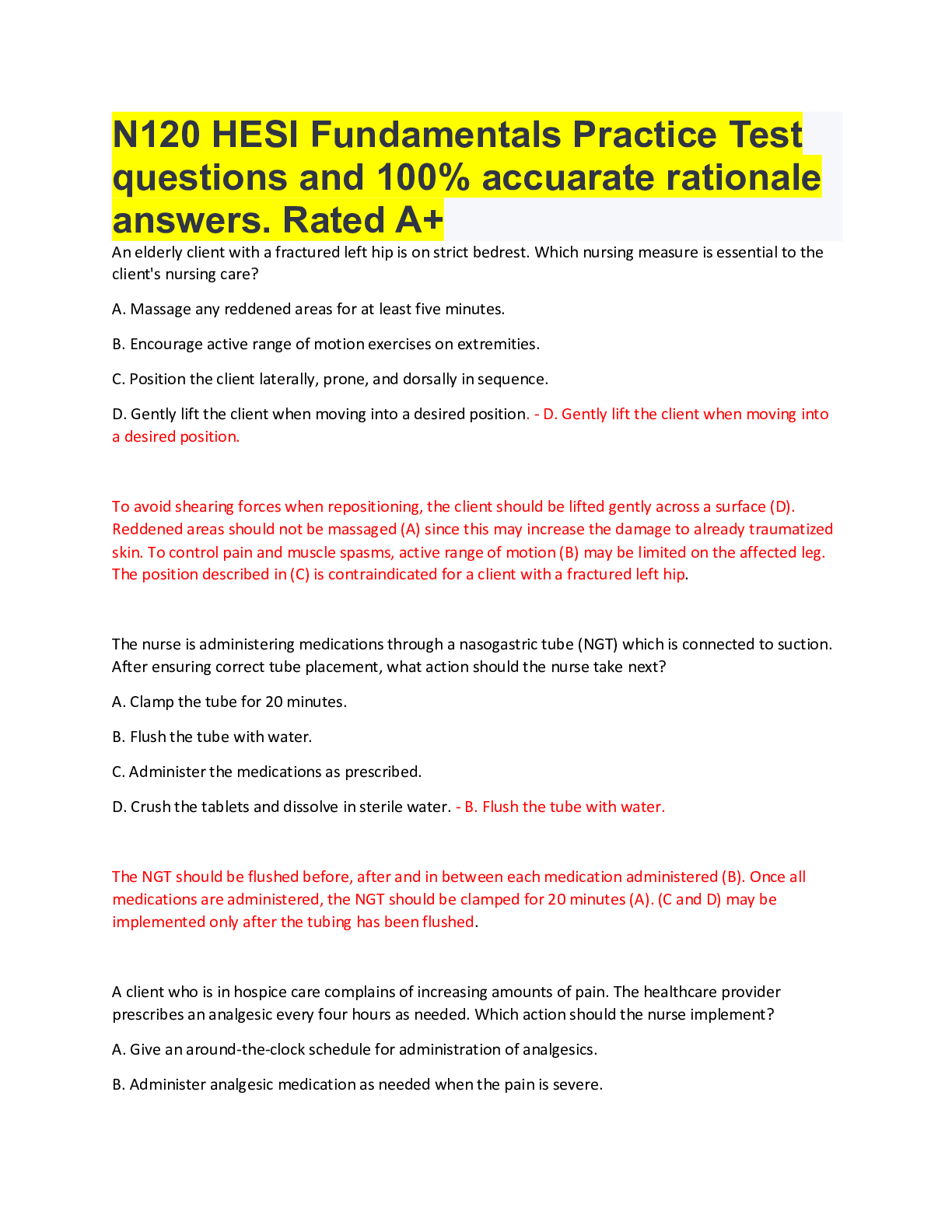
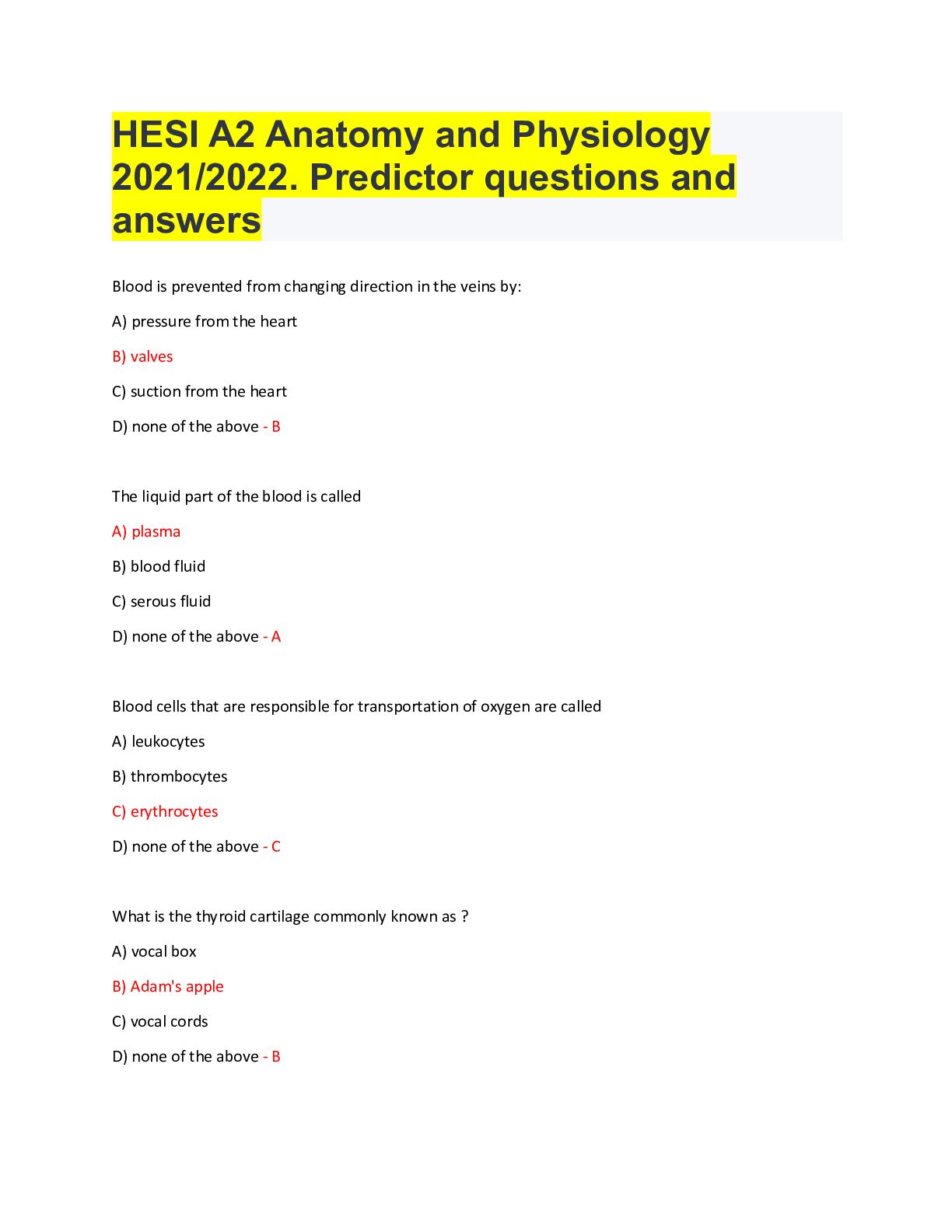

 V1V2.png)
